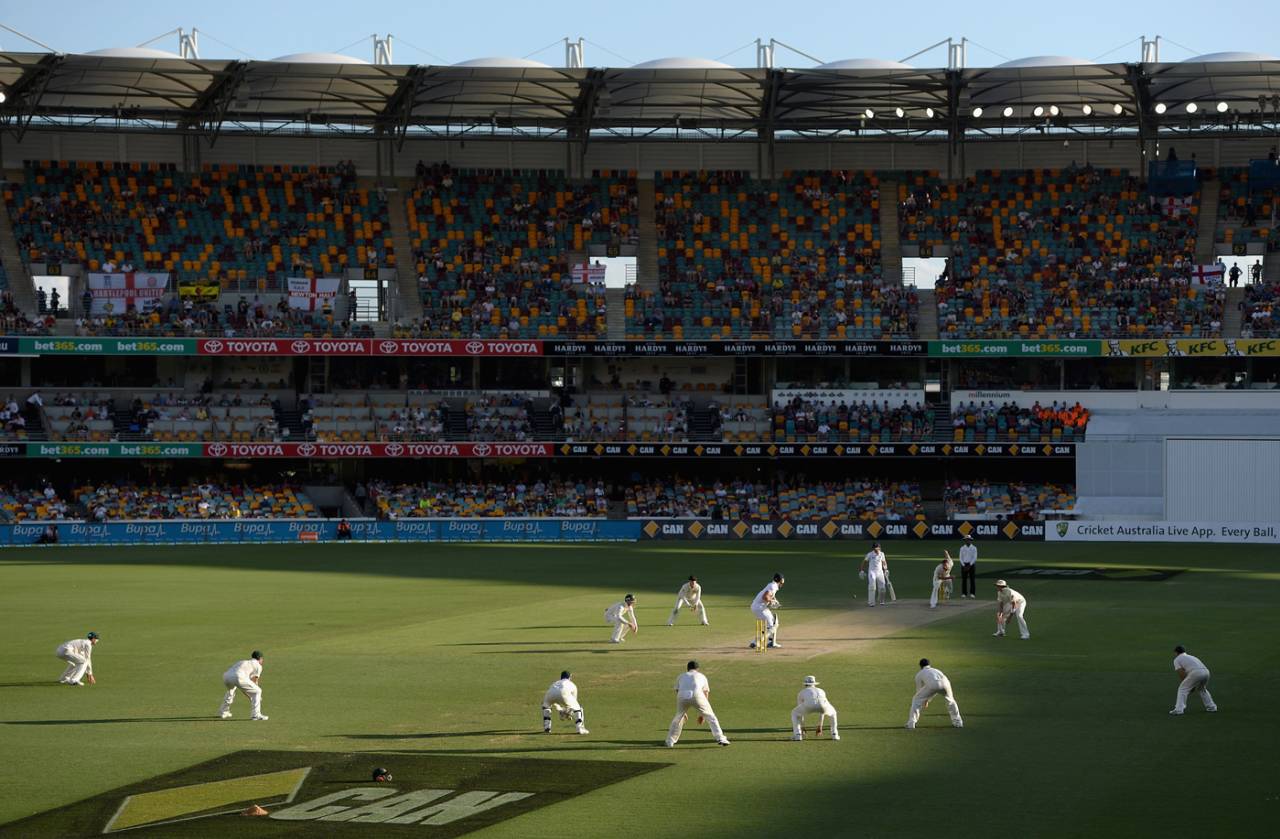You can guarantee the
move of the Gabba away from its traditional slot at the start of the home summer will cause a ripple of discussion around the Australian dressing room. Losing the chance to meet touring sides in Brisbane for the first Test of the season would equate to handing over a major competitive advantage.
Australian Test teams and the Gabba have always seemed to go hand in hand, like England and seam or India and spin. There is the bounce on offer, and the lateral movement when overhead conditions permit. But other, more subtle, elements of playing cricket in Brisbane also come into the equation.
I seldom found a greater contrast between the certainty in our group and the uncertainty in the opposition's than in the days and hours before the first ball in Brisbane. Visiting sides would be unsure whether to bat first or not, whether to play four quicks or not, or whether to attack or defend and try to take the game deep.
All that uncertainty would help us as we forged on with a simple plan - not dissimilar to that employed by the Queensland Sheffield Shield side. It is generally better to bat first in Brisbane even if the pitch has a bit in it, because it's invariably harder to bat on day two, when the surface has quickened up a bit and the nicks carry even further.
Similarly the bowlers would know just the right lengths to bowl, a little bit fuller than in the southern states, in search of nicks, and around a fourth- or fifth-stump line so the batsmen were unsure of whether to defend the stumps or leave the moving ball to fly through into my gloves. It shouldn't be forgotten either that spinners could find the ground a very fruitful place to bowl, utilising the bounce and pace - just check the handsome Gabba records of
Shane Warne and
Nathan Lyon for proof.
Often the fast bowlers of visiting sides would tend to pitch too short, affording us plenty of opportunities to leave the ball when it was new, and then to pull and cut as the Kookaburra lost a little bit of its shine and hardness.
Matthew Hayden, not only an Australia opener but a Queensland native, was a brilliant exponent of this.
It was Haydos who helped fill me with a sense of confidence walking out onto the ground, for he would just get so excited about starting the summer in Brisbane. Years after he retired, the Australian side of 2013-14 strutted onto the ground for the
first Test of that Ashes summer knowing we had strong allies in the ground and pitch we were starting on. Thanks largely to Mitchell Johnson, and perhaps a few day-one runs by yours truly, we set the tone for the whole summer at the first time of asking.
A lot of that advantage, however, is lost by moving the Gabba away from the start of a summer. Touring teams are less likely to be caught off balance if they have more time in the country behind them, and for the home side, it can be harder to turn momentum back towards them if it has swung away.
Often the fast bowlers of visiting sides would tend to pitch too short at the Gabba, affording us plenty of opportunities to leave the ball when it was new, and then to pull and cut as it lost a little bit of its shine and hardness
Two examples from recent years: in awful circumstances the 2014-15 season was turned on its head, and the Gabba was swapped with Adelaide for the
first Test, against India. Adelaide was an extraordinary week for all kinds of reasons, but there's no doubt the pitch helped Virat Kohli's men get much closer to a win than might have been possible in Brisbane. This summer, of course, South Africa got the opportunity to start the series in Perth, a place where they've never lost, and they carried the early break all the way to a deserved series win.
I understand that crowds for Brisbane have been disappointing outside of Ashes Tests for some time, and I also think the day-night concept is worth trying at the Gabba. But I do hope that Cricket Australia's administrators take into full consideration how much the Australian team values getting a head start on the summer in Queensland when they are thinking about future summer schedules.
Pakistan are starting their series in Brisbane, but they've already been in New Zealand for several weeks before their warm-up match in north Queensland. It will be interesting to see how they adapt, particularly their older batsmen like Misbah-ul-Haq and Younis Khan. I'm also eager to see how Yasir Shah's legbreaks fare on the Gabba surface.
The most defining thing about this series, though, is likely to be Pakistan's catching. We are all aware how dangerous their pace bowlers can be, not least the recalled Mohammad Amir. But the New Zealand series was further evidence that Pakistan's bowlers often have an inbuilt disadvantage - the need to take more than 20 wickets a Test due to a steady flow of dropped catches.
Alongside the coach, Mickey Arthur, my former state coach and mentor Steve "Stumper" Rixon has been working as Pakistan's fielding coach. Knowing Stumper, he will be giving them plenty of opportunities to work hard on their catching, with an eye on being a more efficient side in the field this series. A Pakistan side that can manage to hold their catches would be a threat to anyone - even Australia on their beloved Gabba.
Former wicketkeeper Brad Haddin played 66 Tests for Australia
